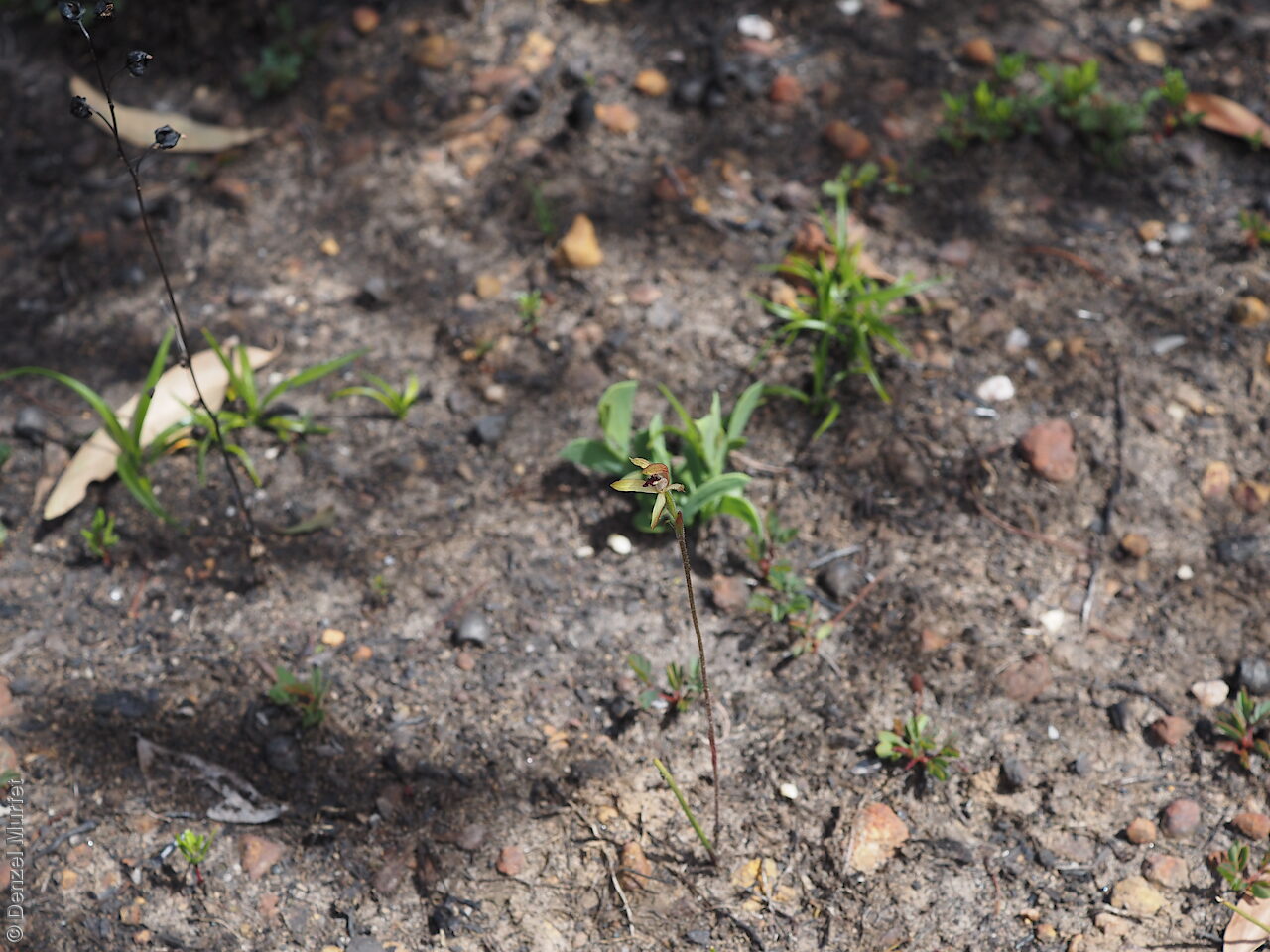
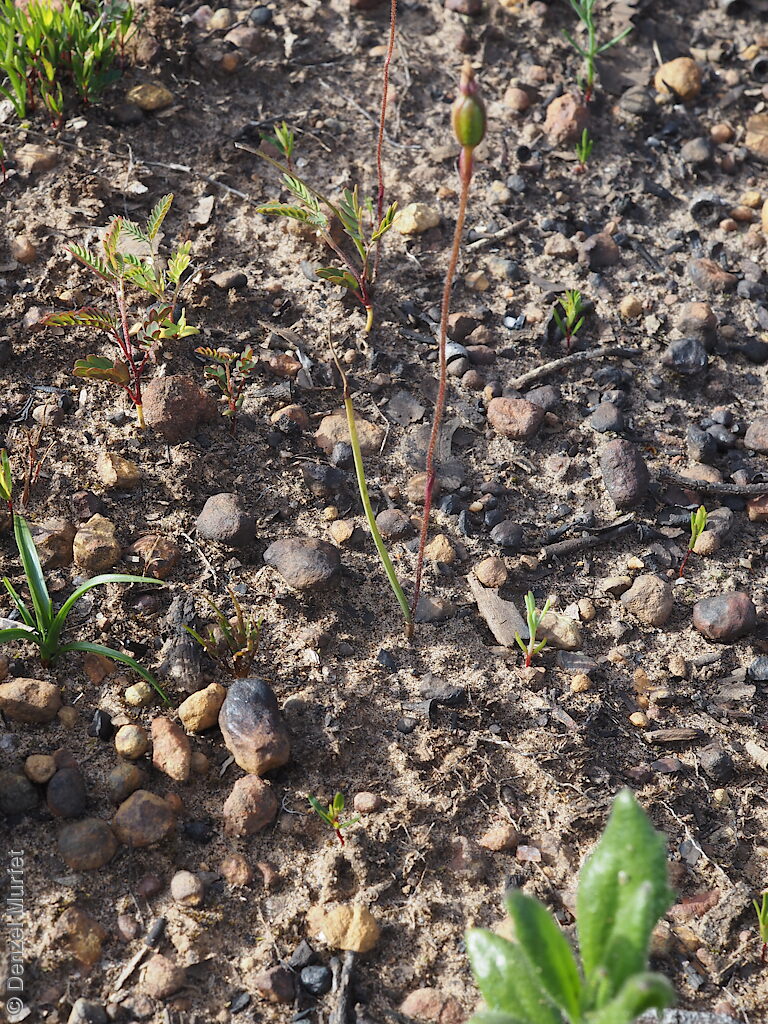
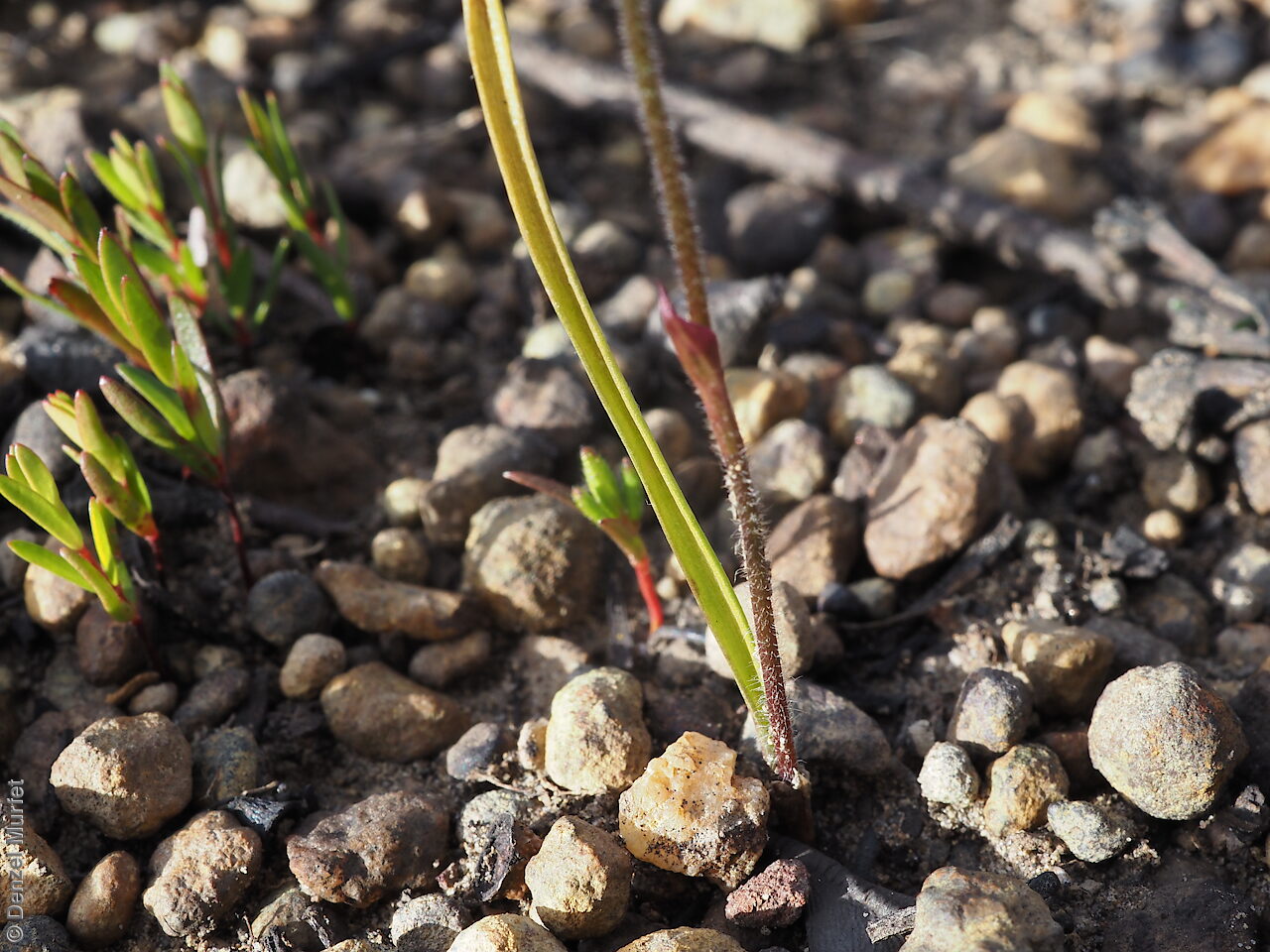
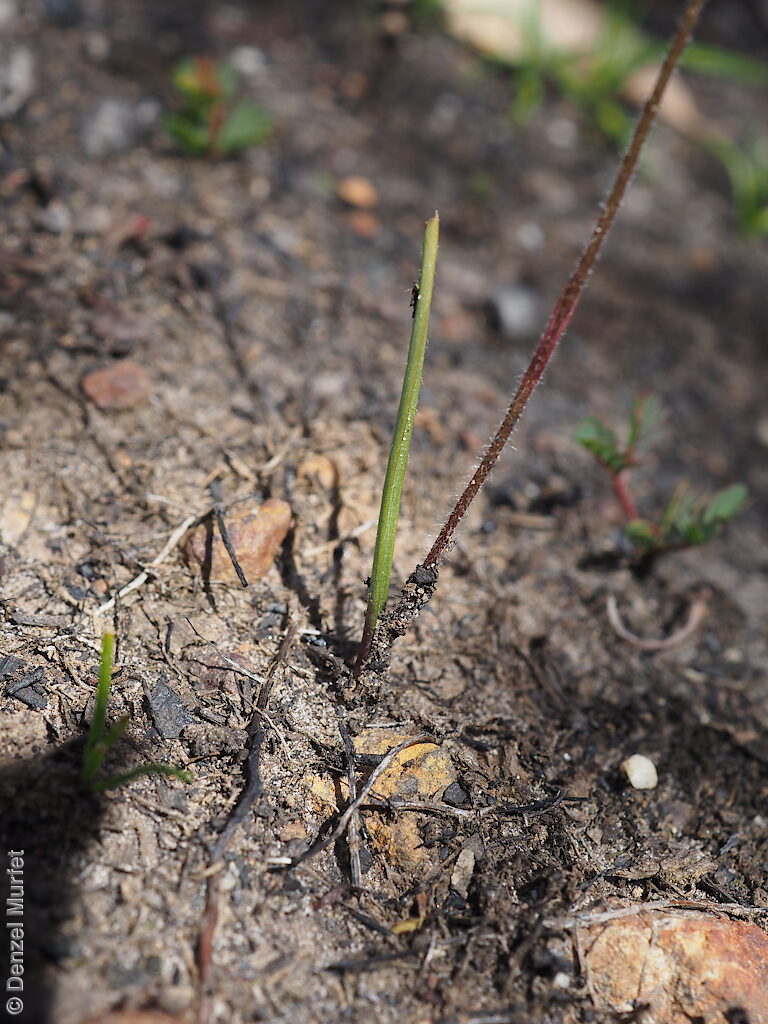
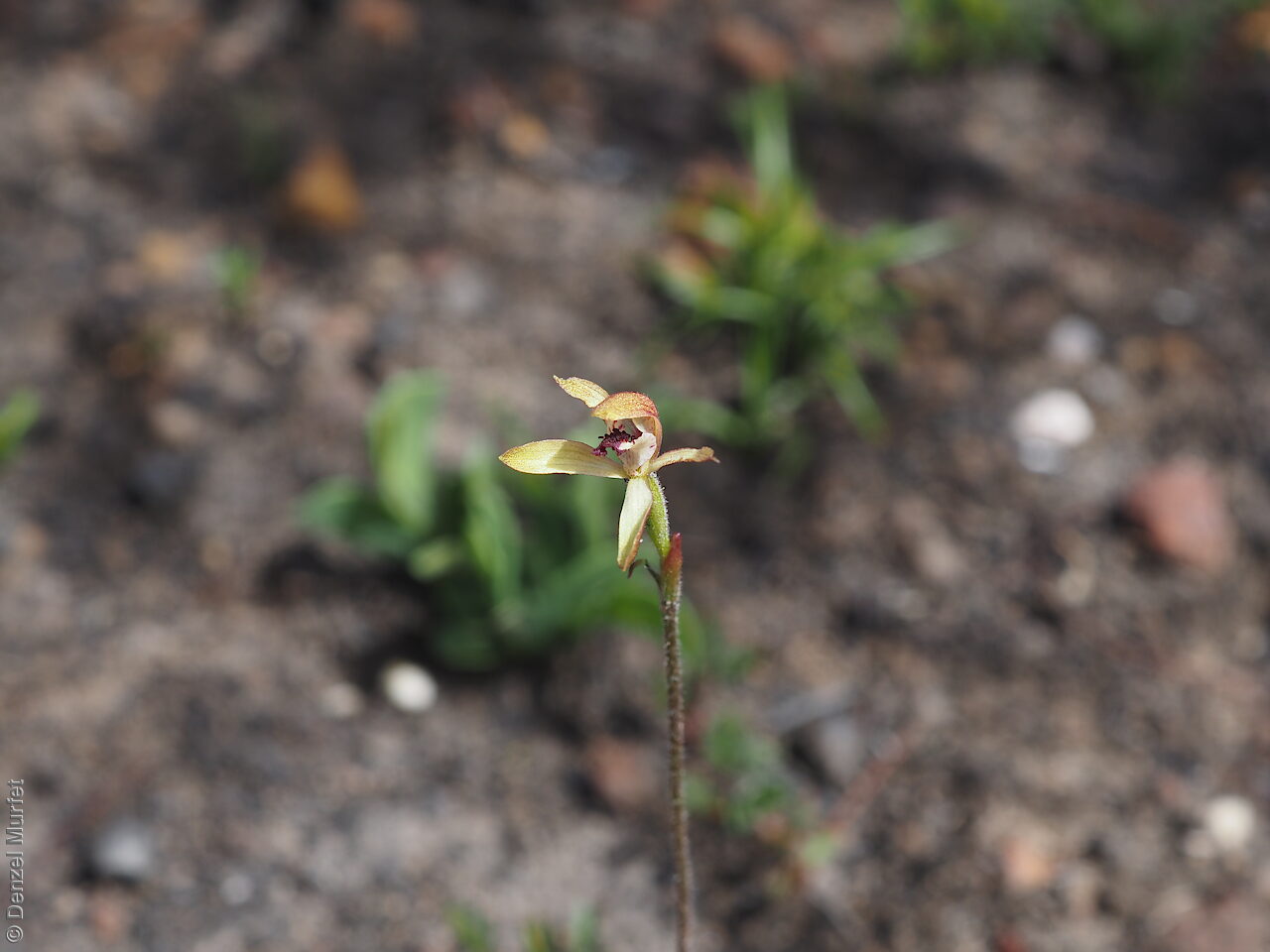
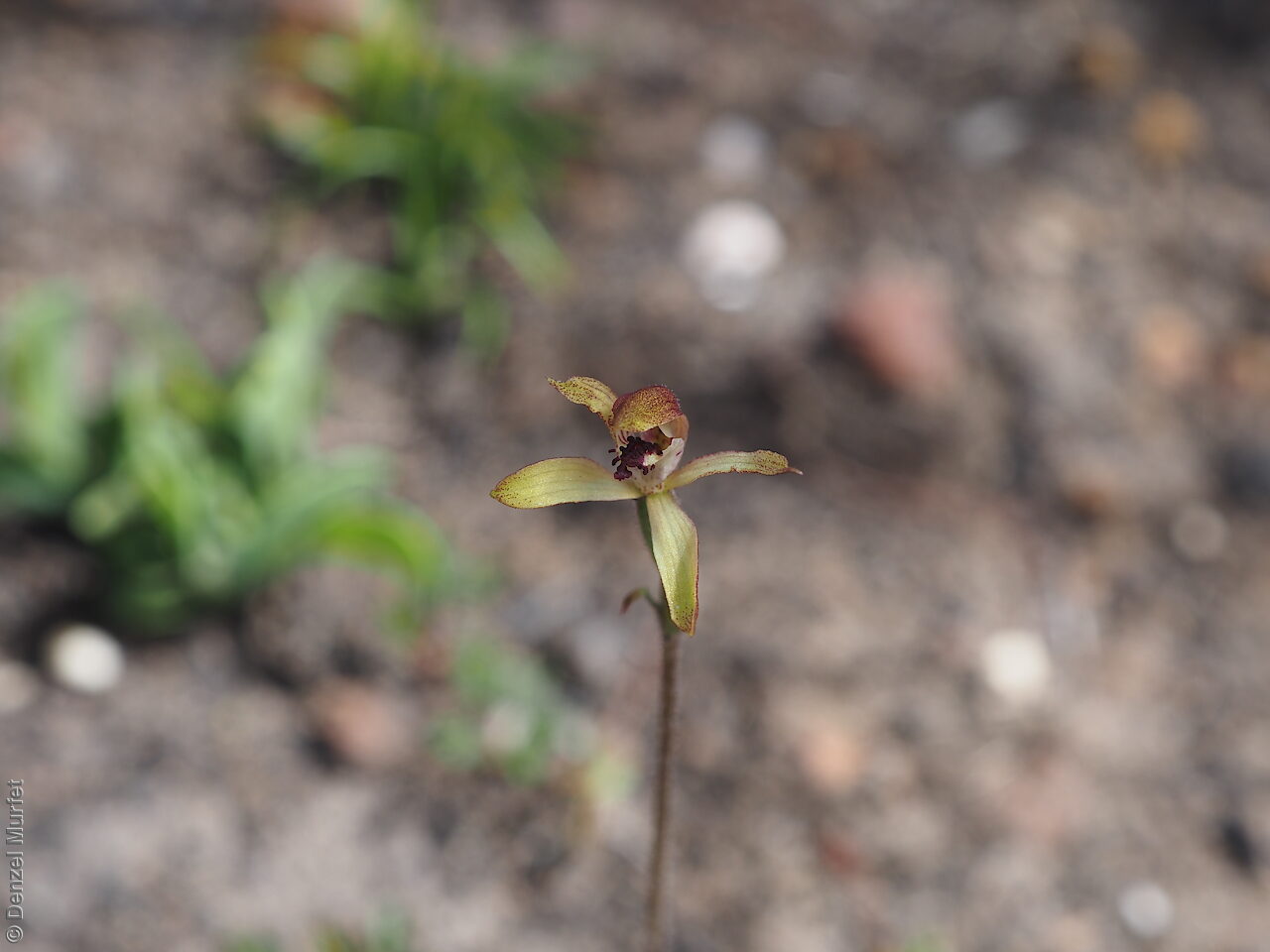
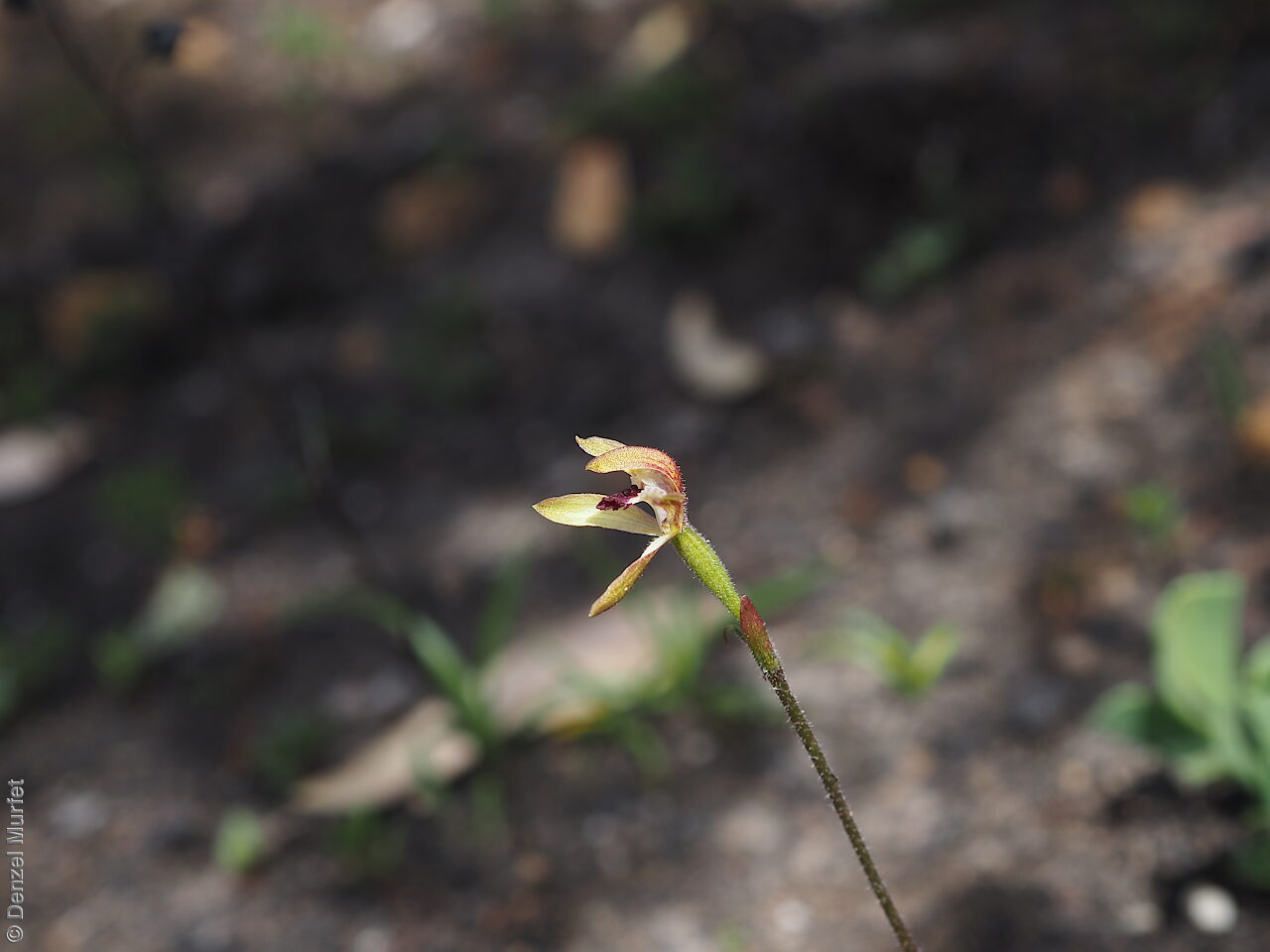
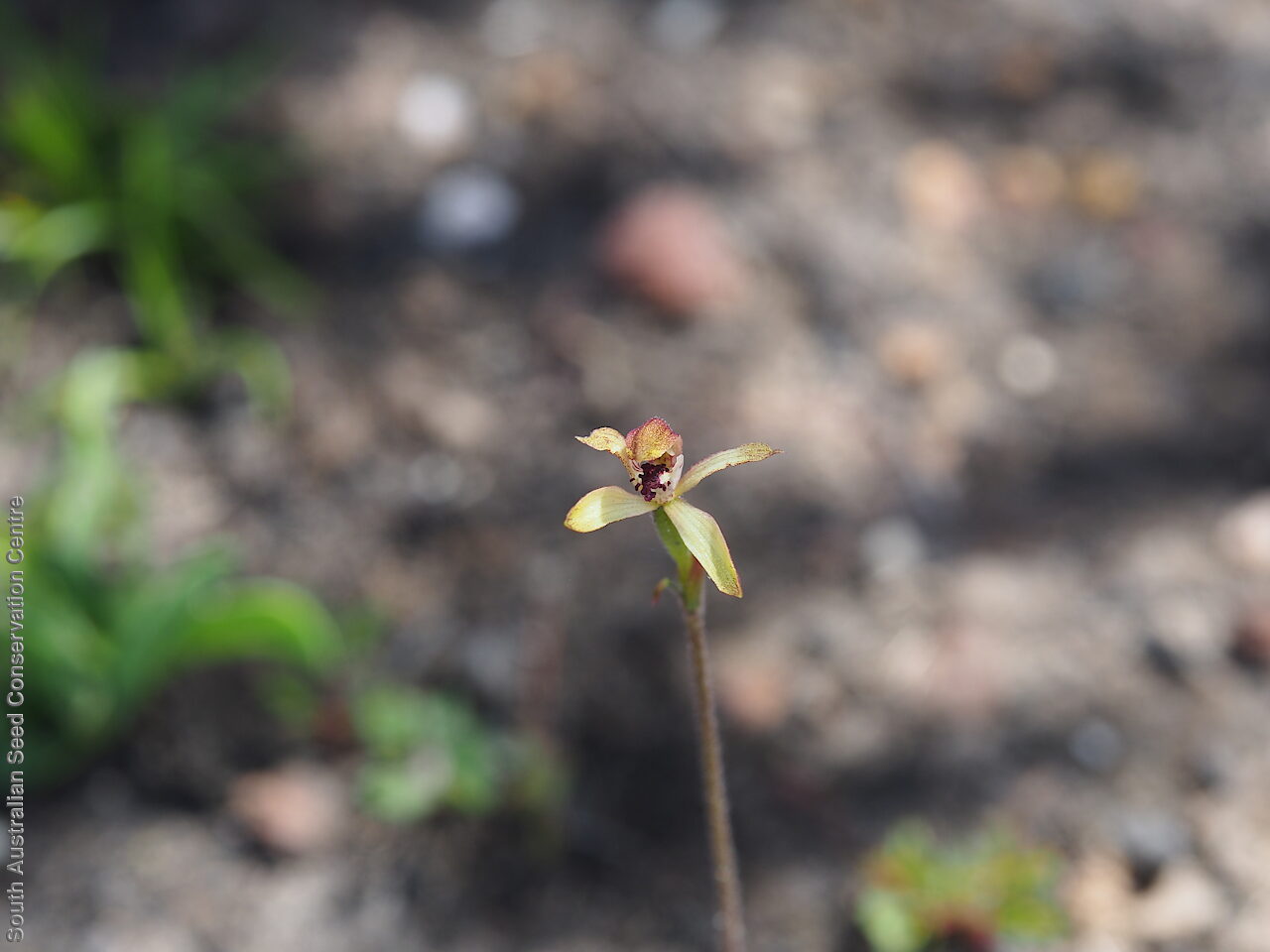
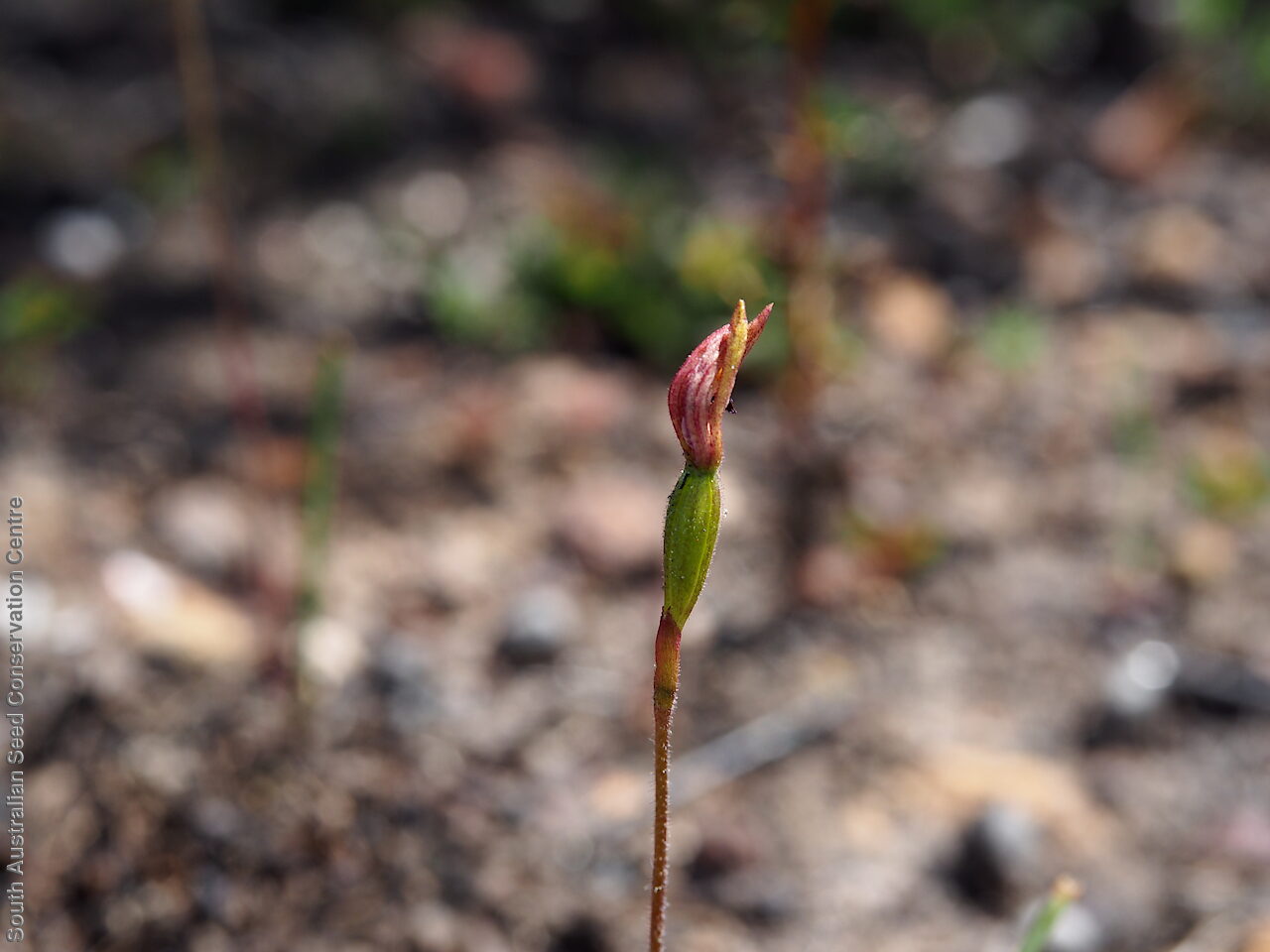
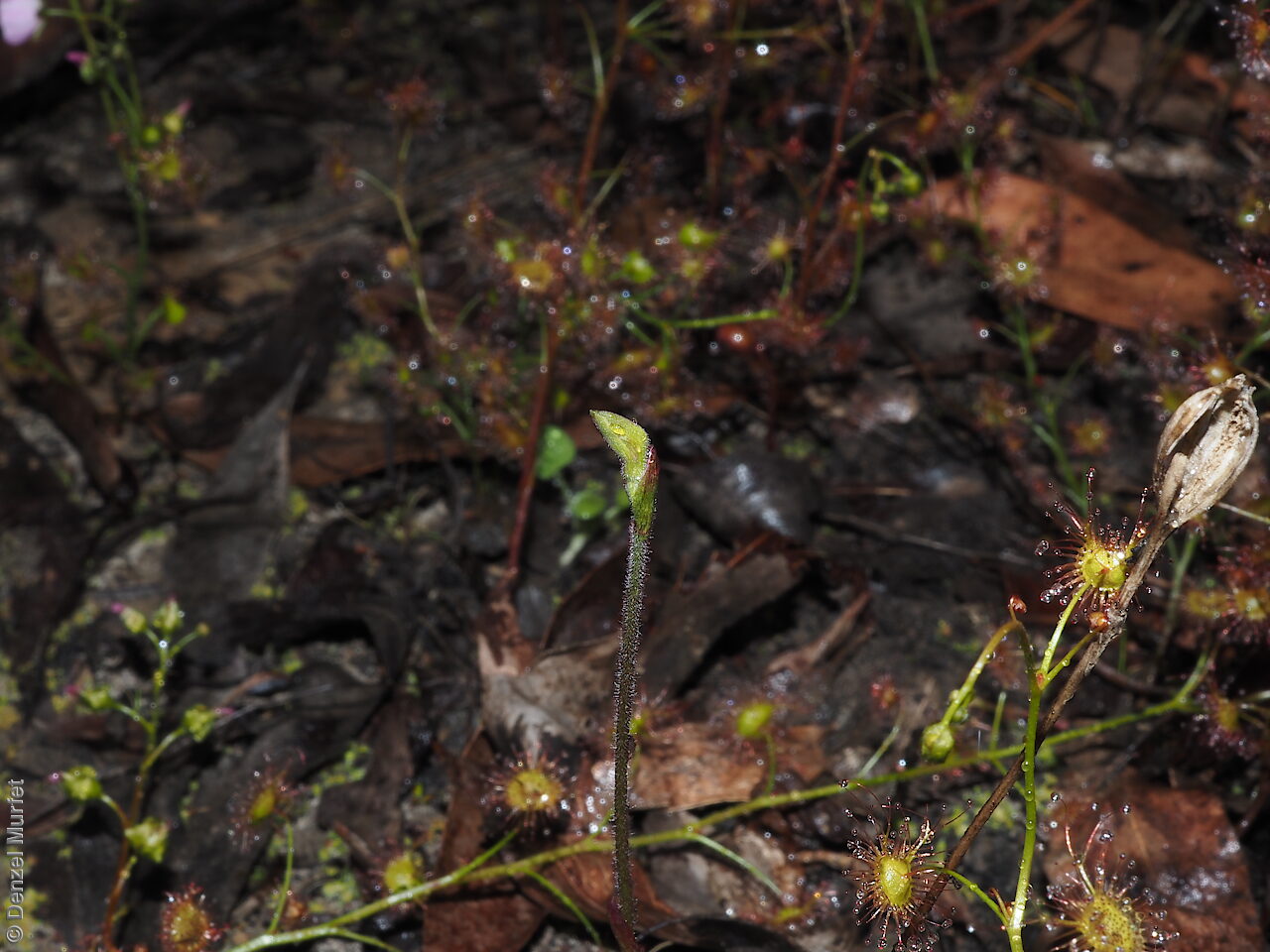
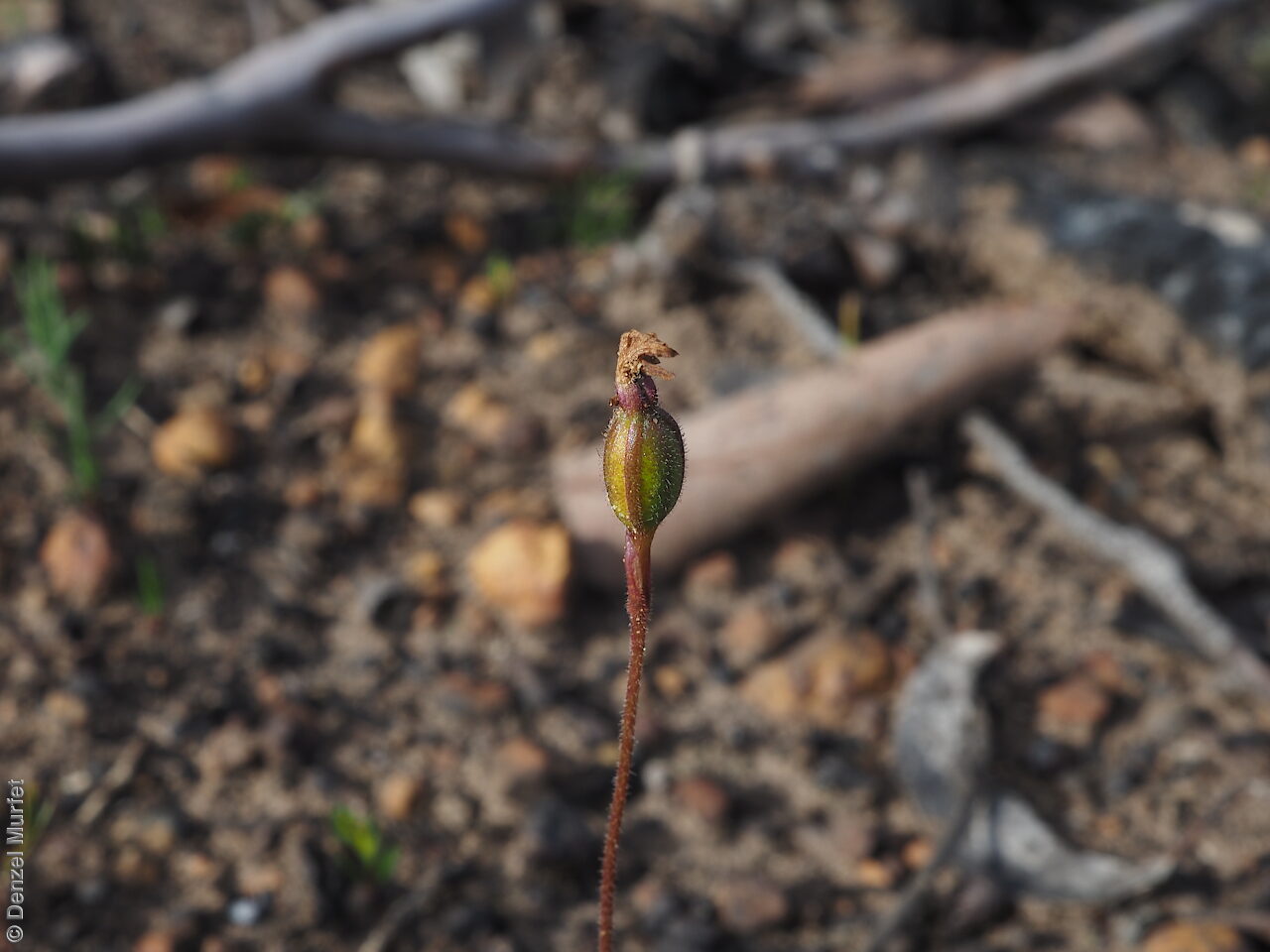
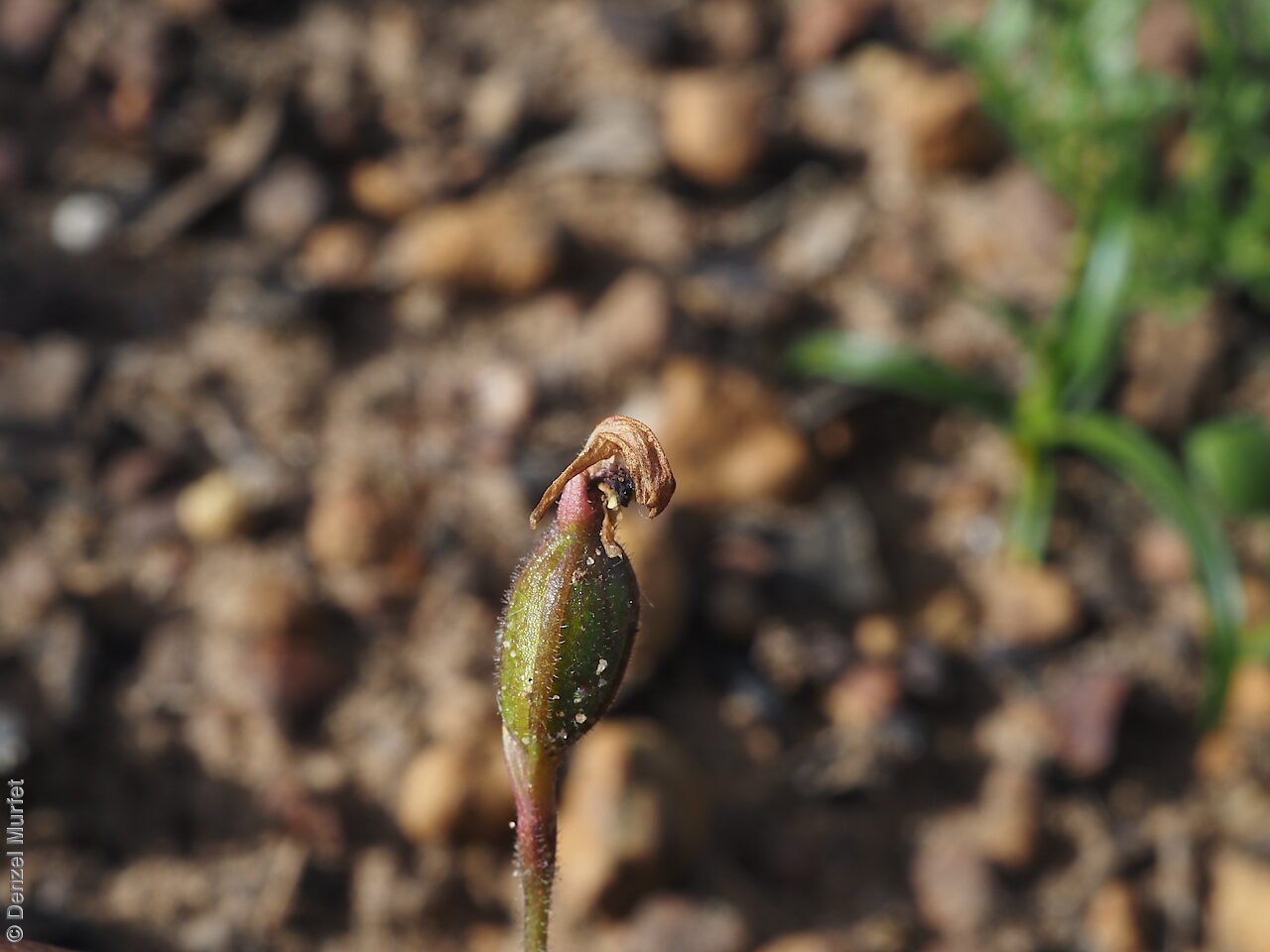
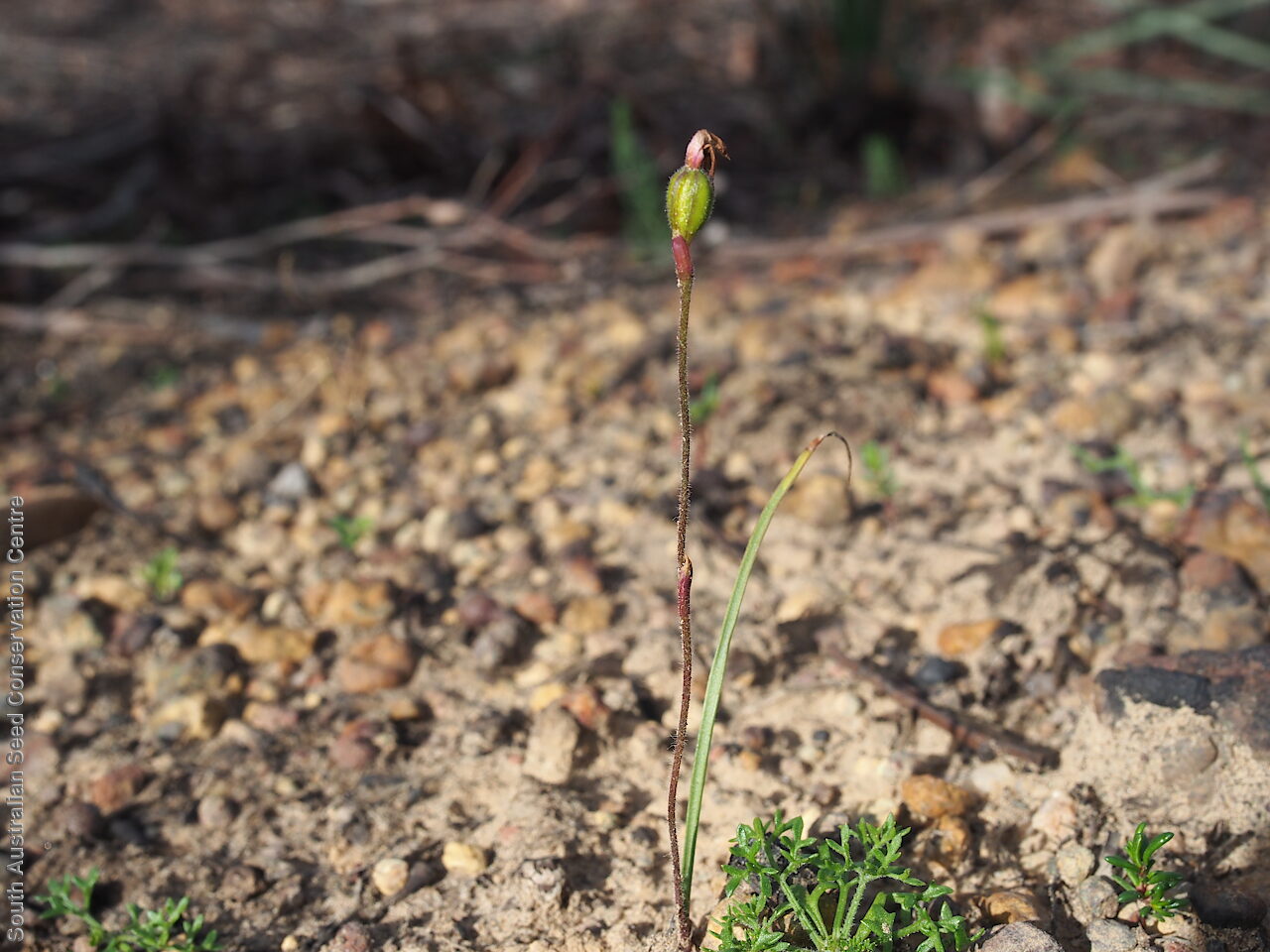


Prior names
Stegostyla aff. transitoria, Bates(2011)
Stegostyla transitoria ssp. isolata
Caladenia isolata
Etymology
Caladenia from the Greek 'kallos' meaning beauty and 'aden' meaning a gland, referring to the colourful labellum and the glistening glands at the base of the column that are present in many of the species. Transitoria from Latin meaning fleeting, passing or temporary, referring to the orchid's brief flowering period. Isolata is the Latinised version of the English word 'isolated', referring to the Kangaroo Island populations being at least 500 km from the nearest known populations of the other species.
Distribution and status
Endemic to South Australia and restricted to the western end of Kangaroo Island, growing in damp heath or in sugar gums under grass-trees along swampy creeklines. Native. Very are in South Australia.
Herbarium region: Kangaroo Island
NRM region: Kangaroo Island
AVH map: SA distribution map (external link)
Plant description
Annual herb growing from an underground tuber, with a single linear, thin textured and sparsely hairy leaf to 10 cm long. Inflorescence on a long slender stalk to 12 cm high with one non-opening green, white and brown or red flowers, glandular outside and glabrous inside. Segments elliptical, remaining strongly incurved. Labellum hidden, trilobed with two rows of stalked maroon-brown calli. Lateral lobes erect, smooth, mid-lobe short triangular with toothed margins. Flowering between October to early November. Fruits are pale-brown hairy, papery ellipsoid capsule cwith strong red stripe.
Seed collection and propagation
Collect seeds between late October and November. Collect fat capsules as they start to dry and turn brown. Pods will split and release the seeds quickly and will require monitoring. To increase the chances of collecting mature pods, it is recommended that a small breathable bag (ie. Organza bags) be used to enclose the developing capsules. Place the capsules in a container that will hold fine seeds and leave to dry for a few weeks or until the capsule split. Then carefully hold the capsule and tap it gently to release the seeds. Store the seeds with a desiccant such as dried silica beads or dry rice, in an air tight container in a cool and dry place, refrigerator or in liquid nitrogen.
Fire response
Obligate re-spouter and re-seeder.
Longevity: >20 years
Time to flowering: 1 year for plants re-emerging from tubers. 2-3 years from seeds
Recovery work
In 2020-2021 this species was assessed post-fire in 1 year old fire scars. A total of 98,300 seeds have been collected & banked for 2 populations inside the 2020 fire scar. Further populations will be assessed and seeds collected on Kangaroo Island in 2021–2022. A symbiotic in-vitro germination method will be assessed in conjunction with some comparative work on related Caladenia species for future recovery work.This project was supported by the Emergency Seed Collecting Fund, a grant awarded to the Australian Seed Bank Partnership by the Royal Botanic Gardens, Kew on behalf of the UK Government.
| Location | No. of seeds (weight grams) | Number of plants | Date collected | Collection number Collection location | Date stored | % Viability | Storage temperature |
|---|---|---|---|---|---|---|---|
| BGA | 46,500 (0.016 g) | 5 | 3-Nov-2020 | Baxters Road Kangaroo Island | 28-Jun-2021 | N/C | -18°C |
| BGA | 51,800 (0.018 g) | 5 | 3-Nov-2020 | Squashy Creek Kangaroo Island | 28-Jun-2021 | N/C | -18°C |
Number of plants: This is the number of plants from which the seeds were collected.
Collection location: The Herbarium of South Australia's region name.
% Viability: Percentage of filled healthy seeds determined by a cut test or x-ray.